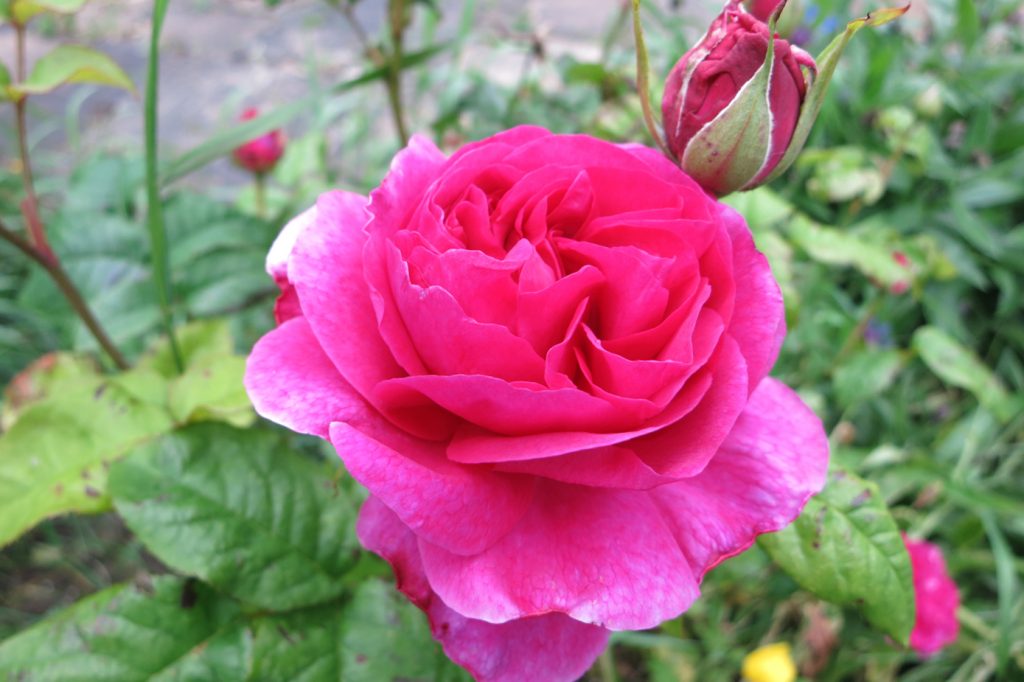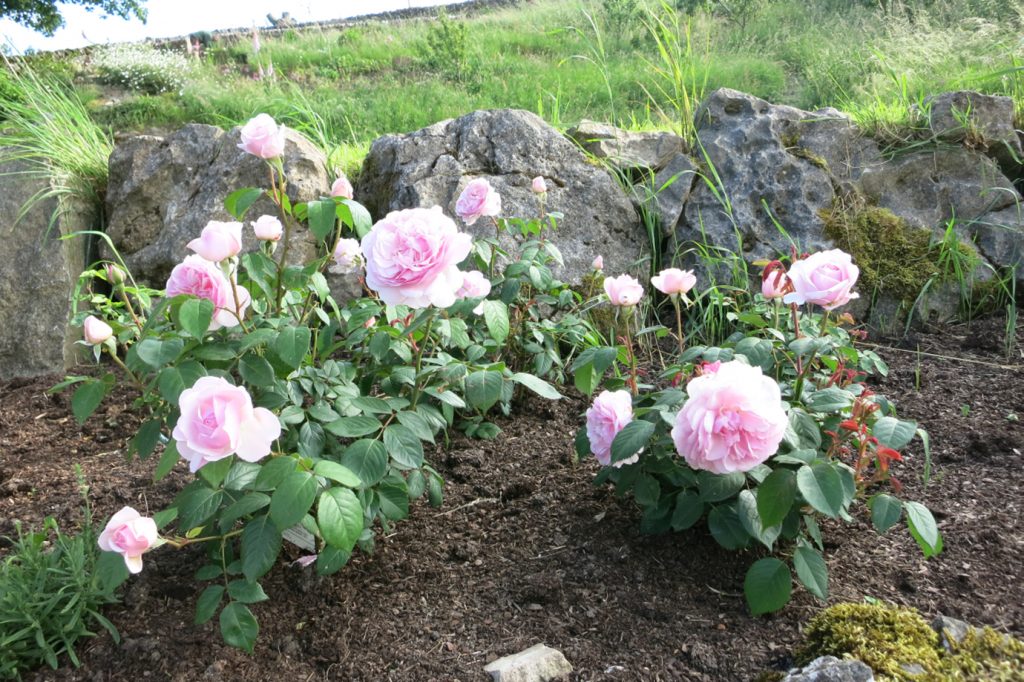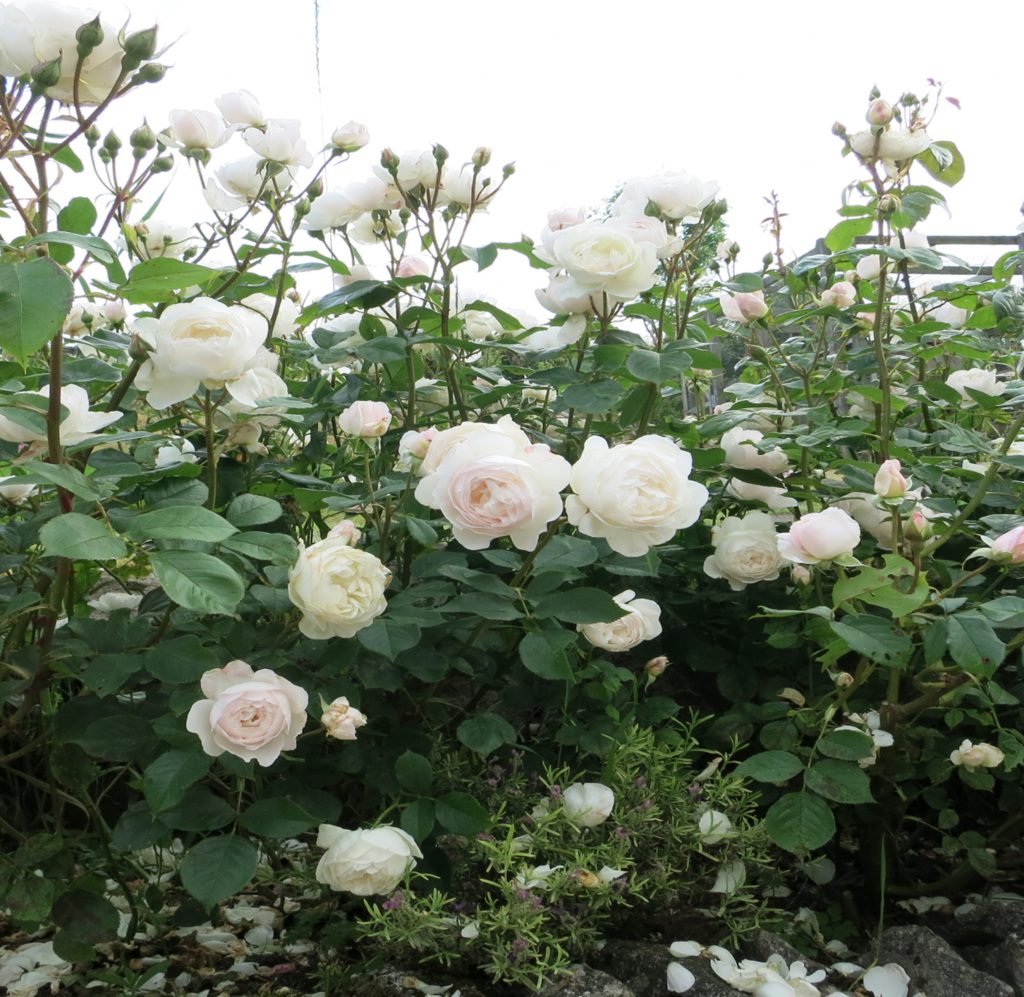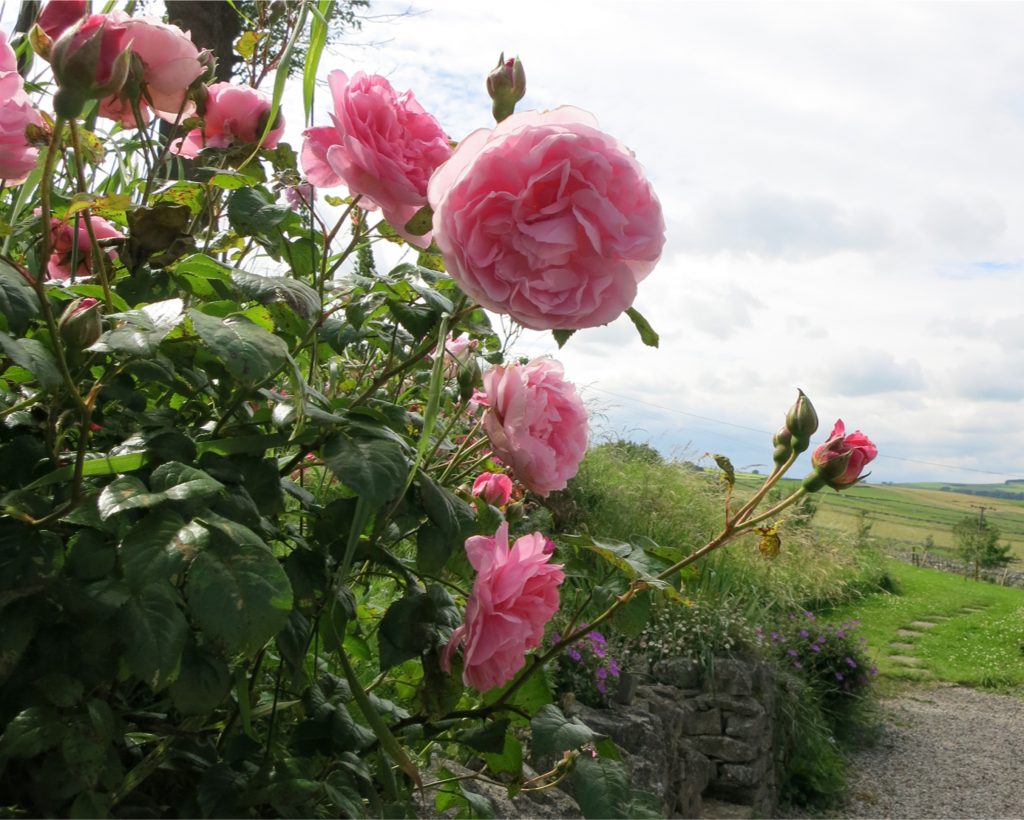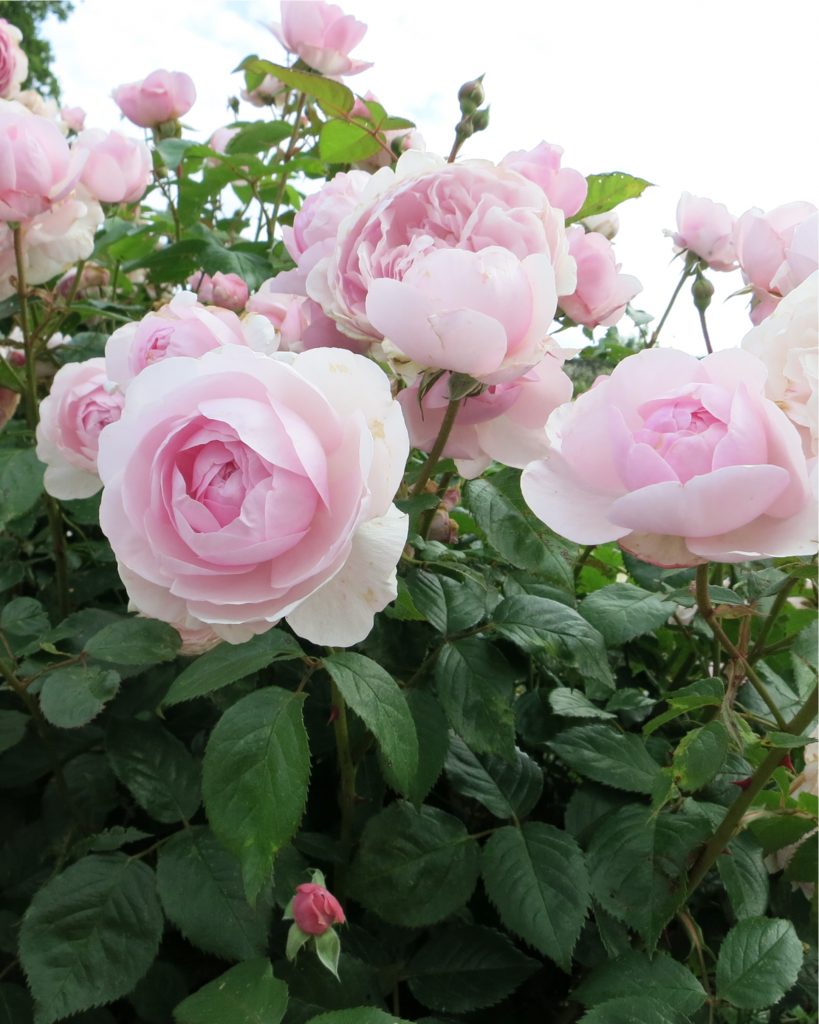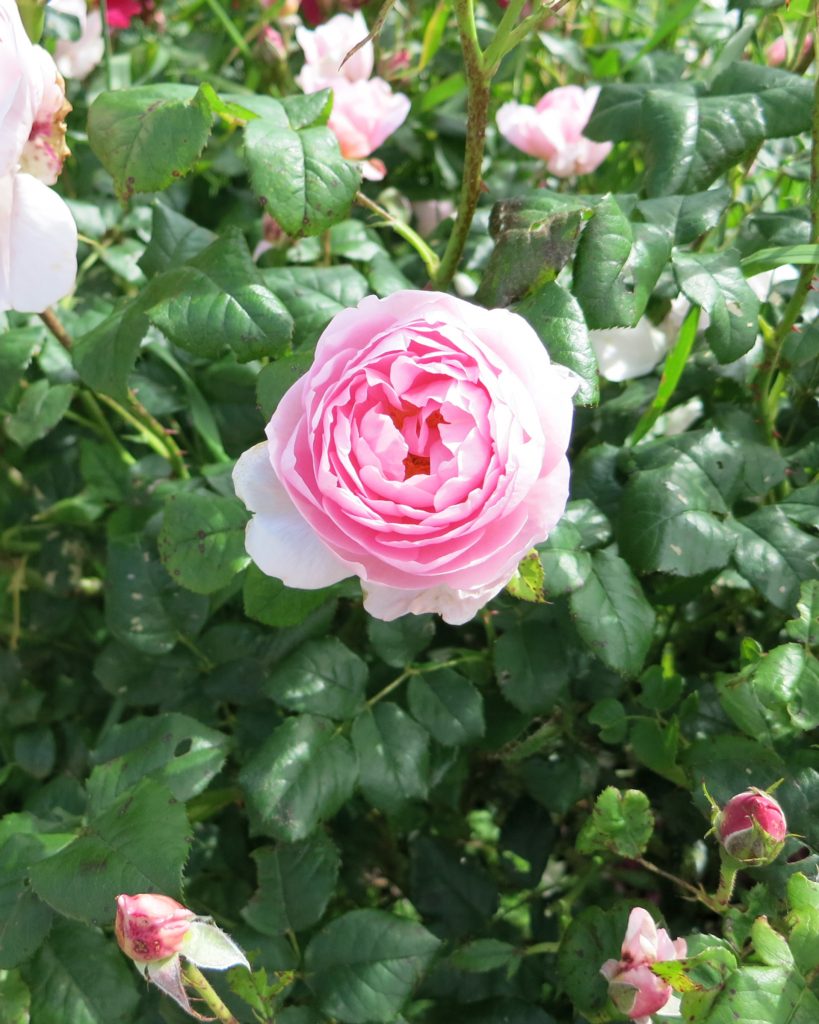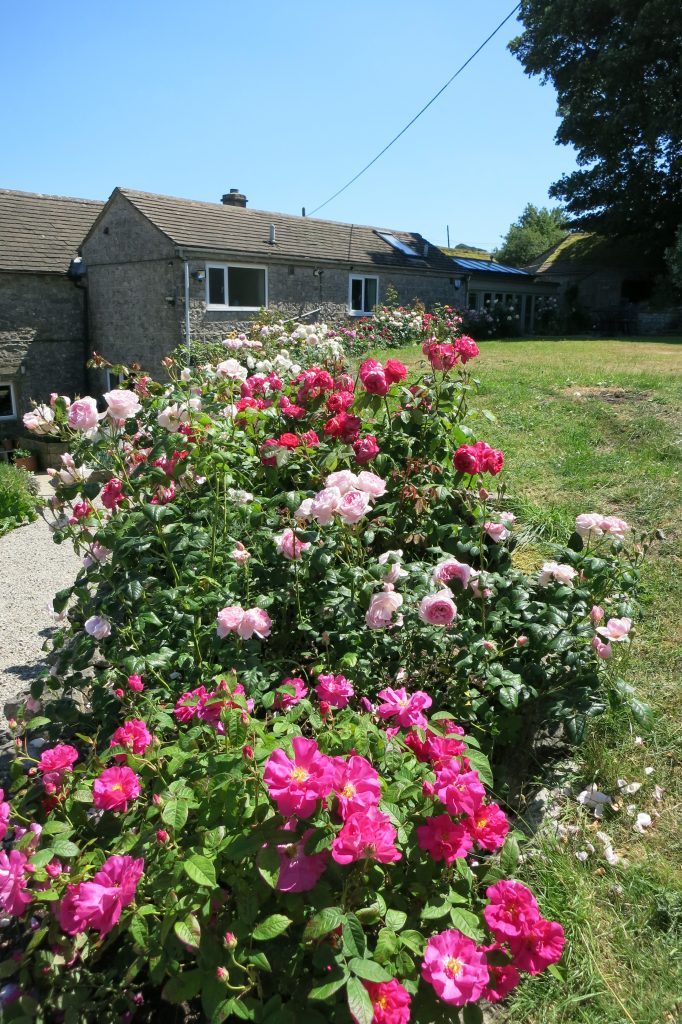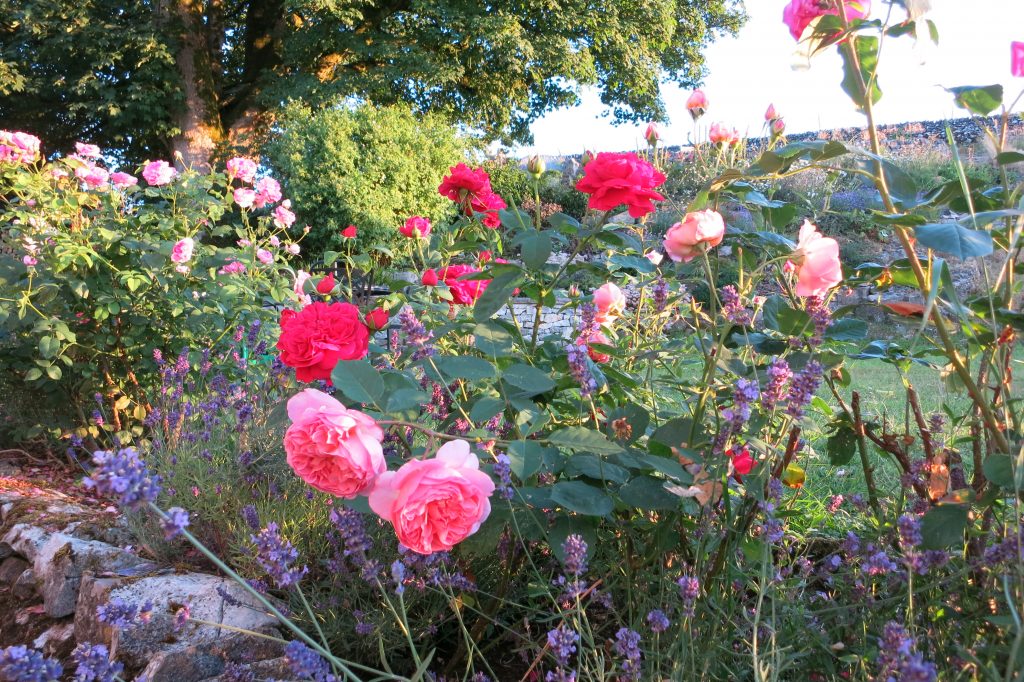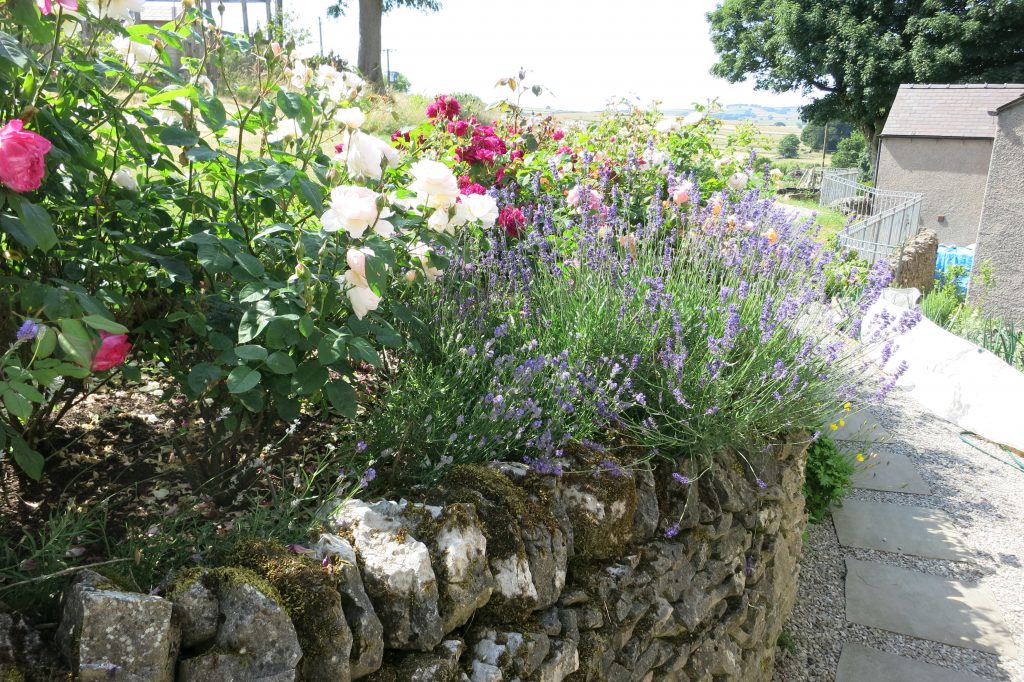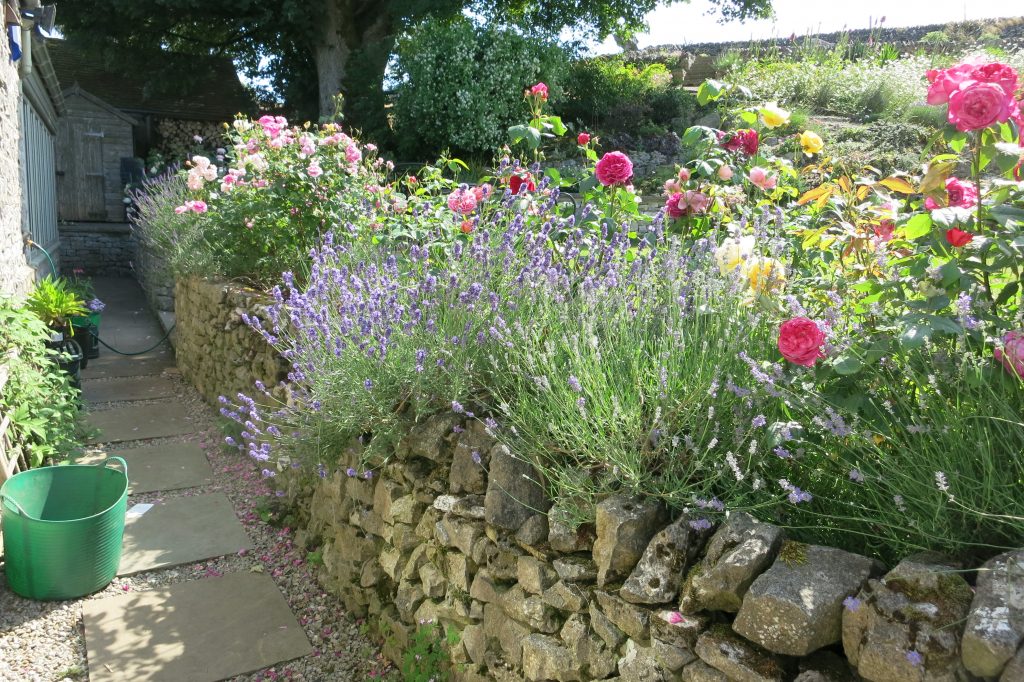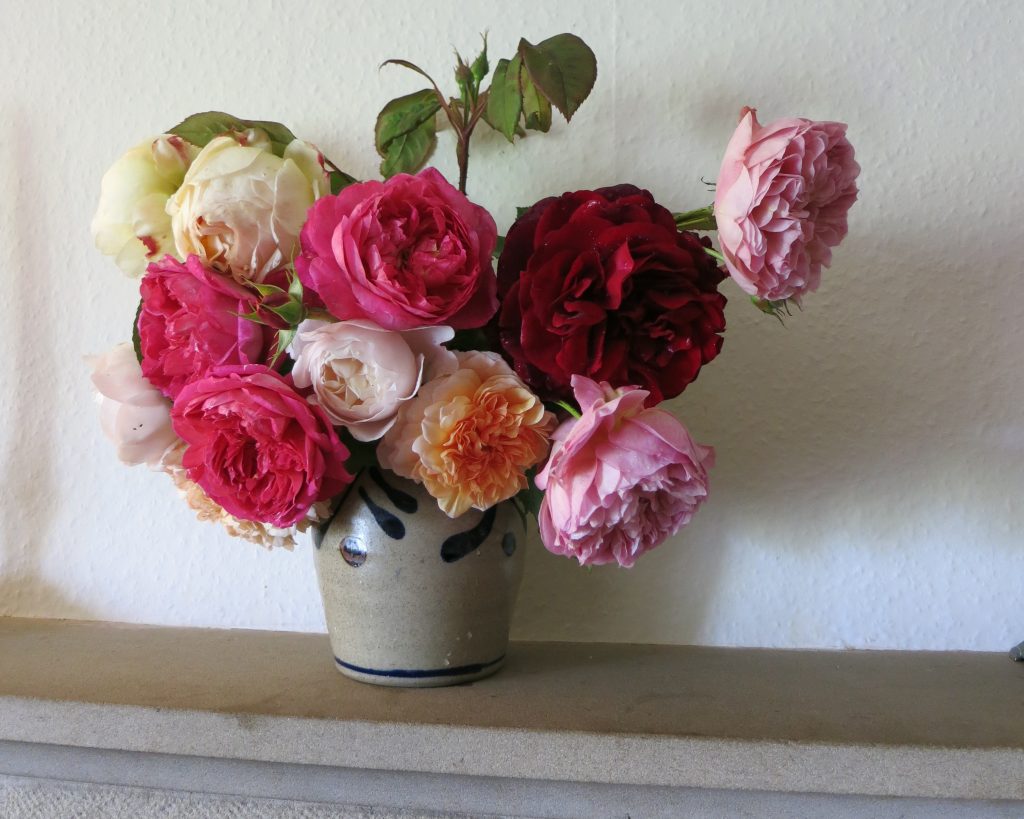There was only one rose in the garden I inherited; a lovely old-established climber beside the front door that I think is an Albertine.

I cannot be certain that this is, in fact, Albertine, but it certainly matches descriptions.
This rose defies all the rules, being planted in a very narrow bed, squashed tightly between a concrete path and the house wall. Its exact age can only be guessed at; it is planted in front of what, at one time, was a front door (note the stone lintel bearing the original building date of 1766); I know that the major work of converting the two tiny farm-worker’s cottages into one house was done in the early 1950s. The next owners appear to have done a lot of DIY alterations in the 1960s, and I first visited this house in the early 1970s, when the rose was very well established, with the appearance of having been there for at least five years, so this rose has, at a conservative estimate, been growing here for over 50 years. Despite my best efforts to nurture it in its old age, sadly it did not reappear after the winter of 2019/20.
The first rose I planted was a climber, William Morris, to scramble over the wall at the end of the Long Lawn. One of the reasons for choosing this rose was to pay homage to William Morris, because of my past career as a textile designer. It’s a very lovely rose and heavily scented, though it does have a tendency to hang its head somewhat.
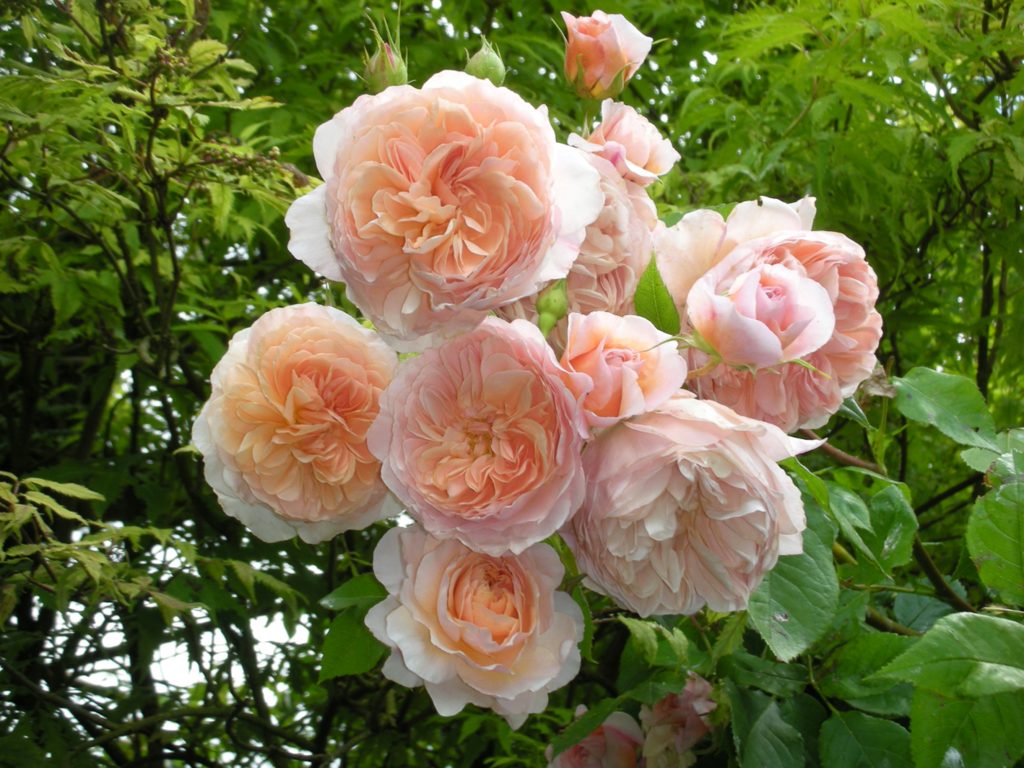
For most of my adult gardening life, I had subconsciously ignored roses, I think because of the amount of effort I had had to put in to my father’s rose beds; he had planted 300 floribunda, Hybrid Tea and Polyantha roses in his new-build garden in the early 1950s and it was my job to prune, deadhead and feed them all. They put on a lovely show each year, but very few of them offered much by way of perfume. The one rose I do remember fondly was Frensham, whose exquisite red buds I used to make perfect buttonholes for my father and an elderly gentleman neighbour.
My experience of the William Morris rose is what led me to need more David Austin Old English Roses in my life, hence the birthday visit to Albrighton, with nose, pen & notepad, and my plans for a long rose bed along the edge of the back lawn.
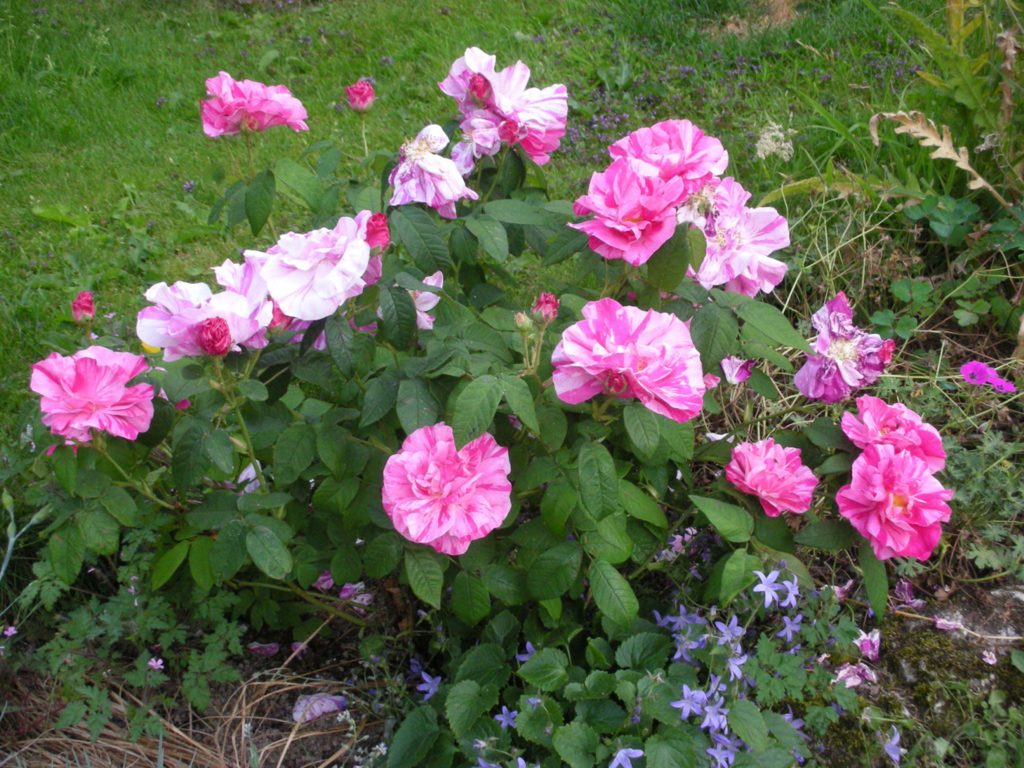
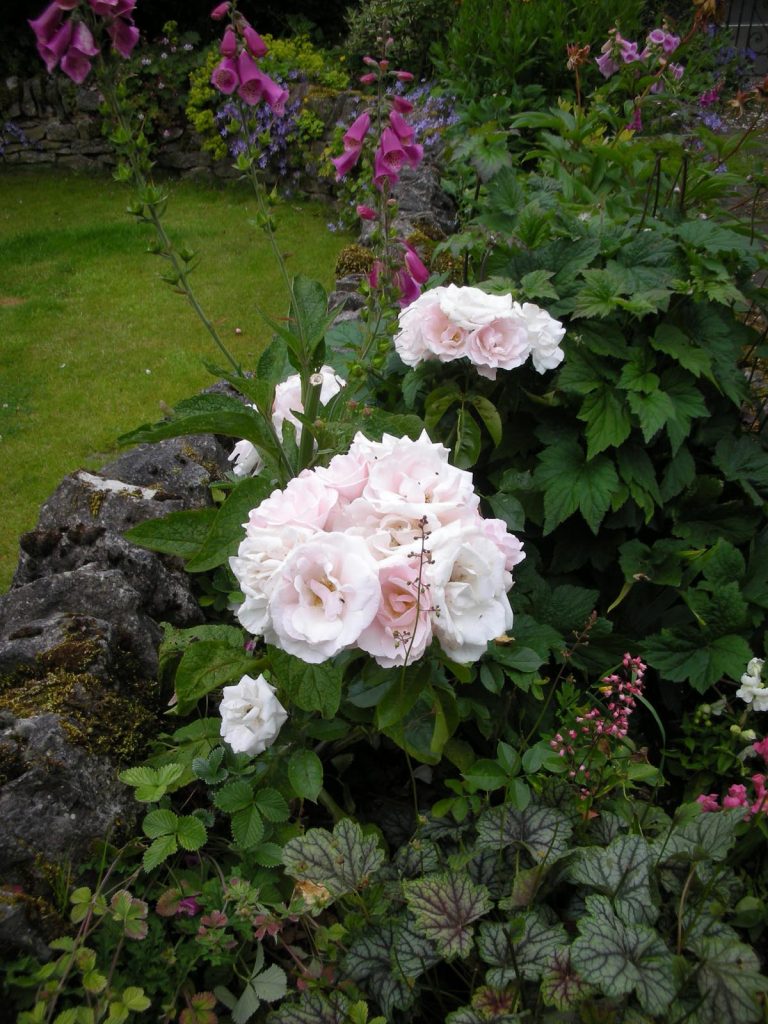
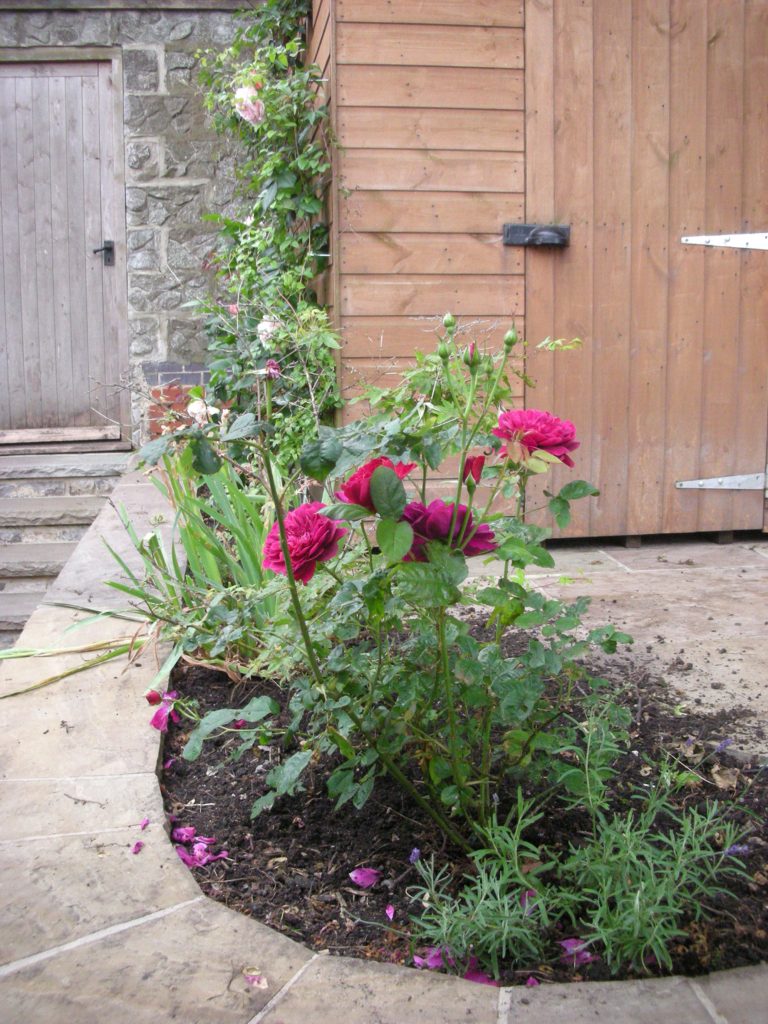
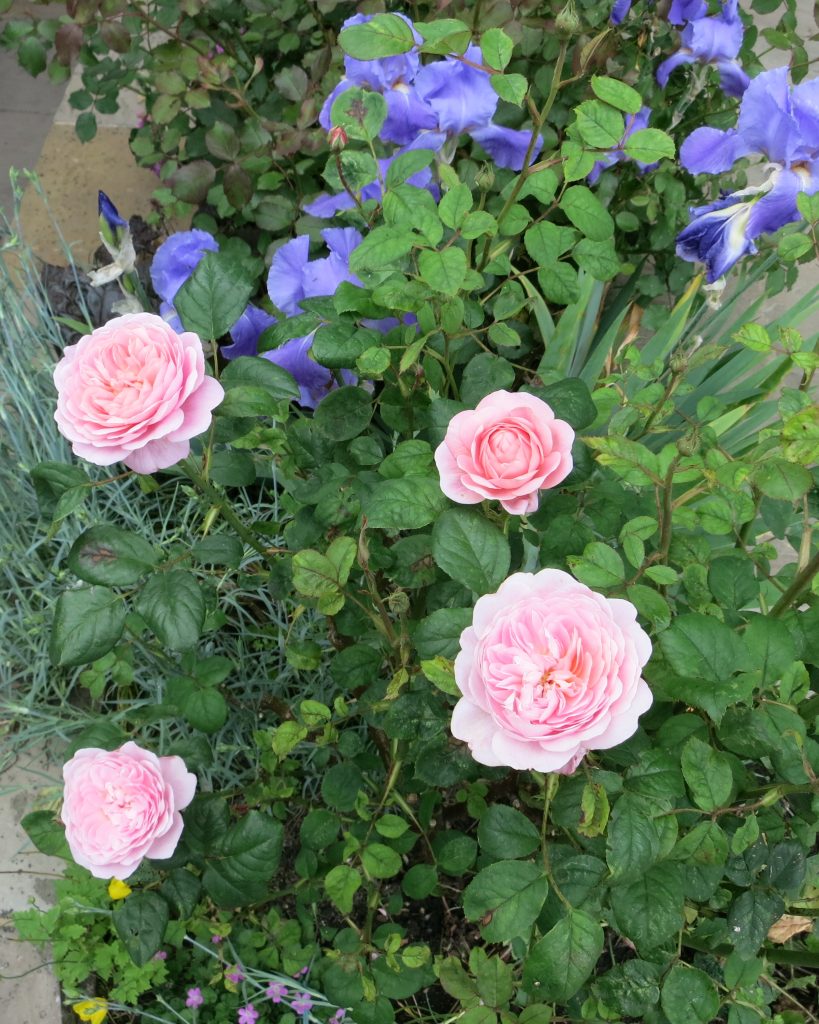
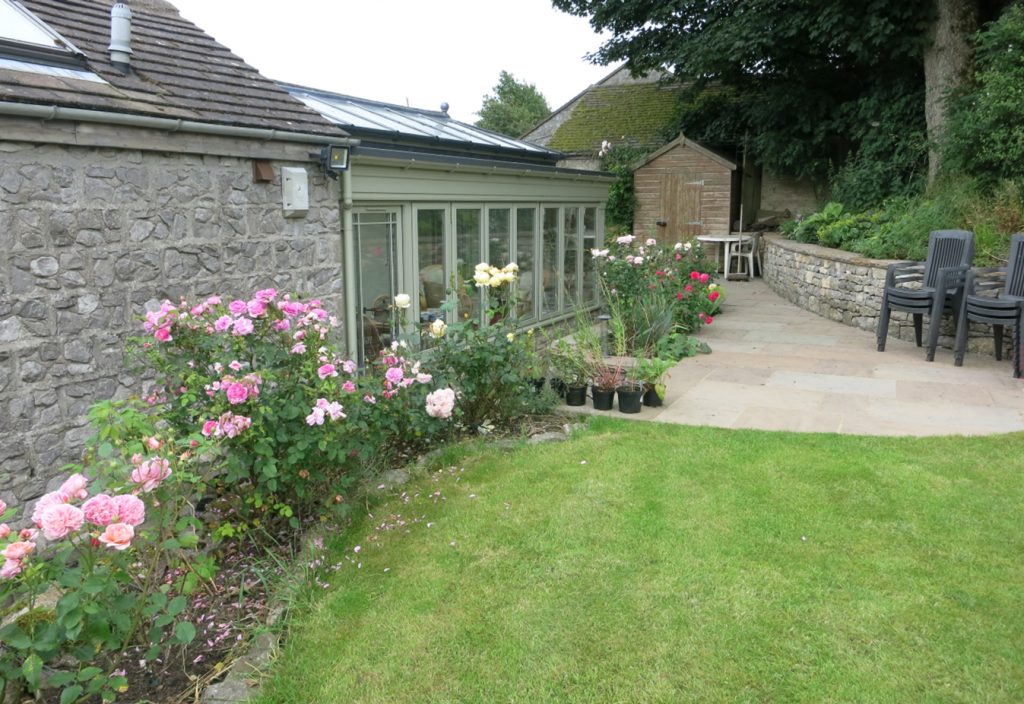
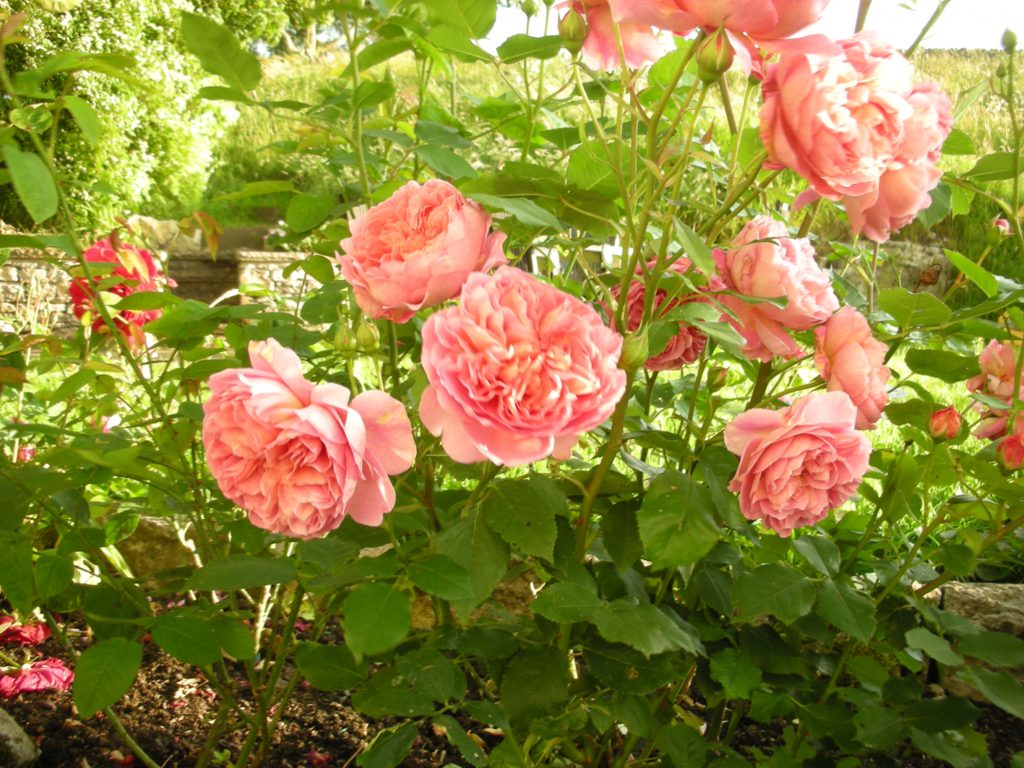
Voted, by virtually all my family and friends, as the finest scented of all my roses so far
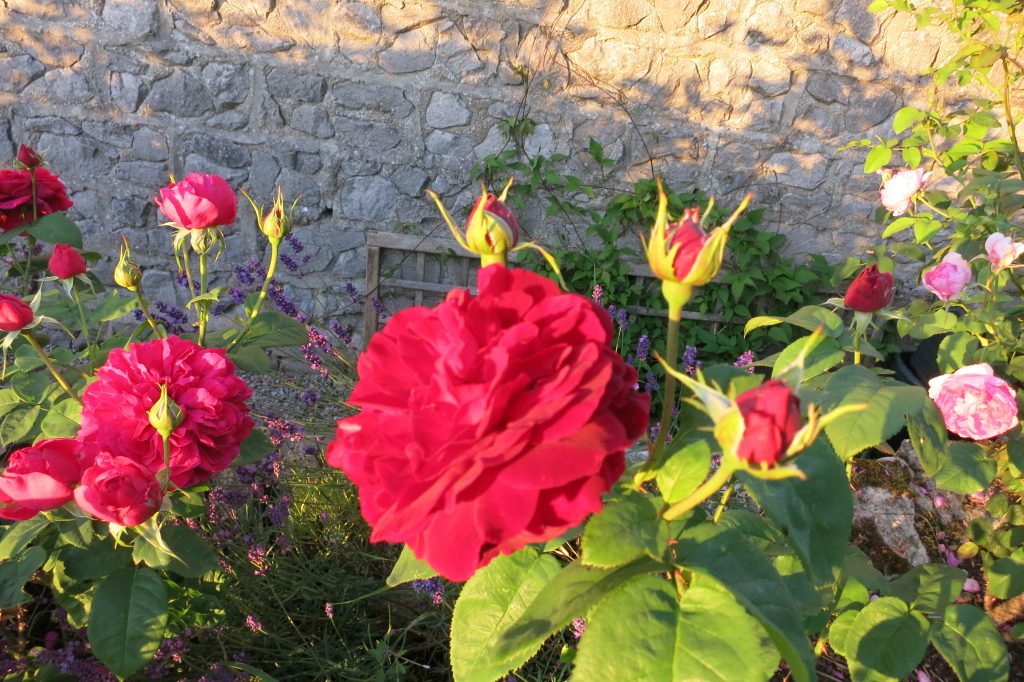
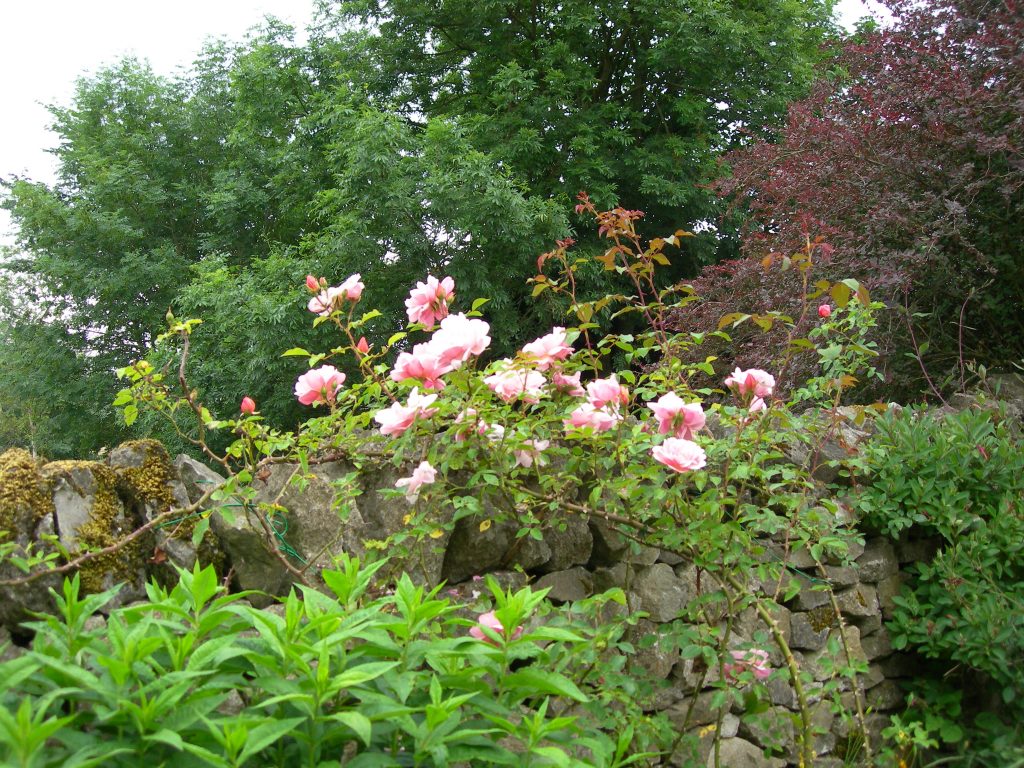
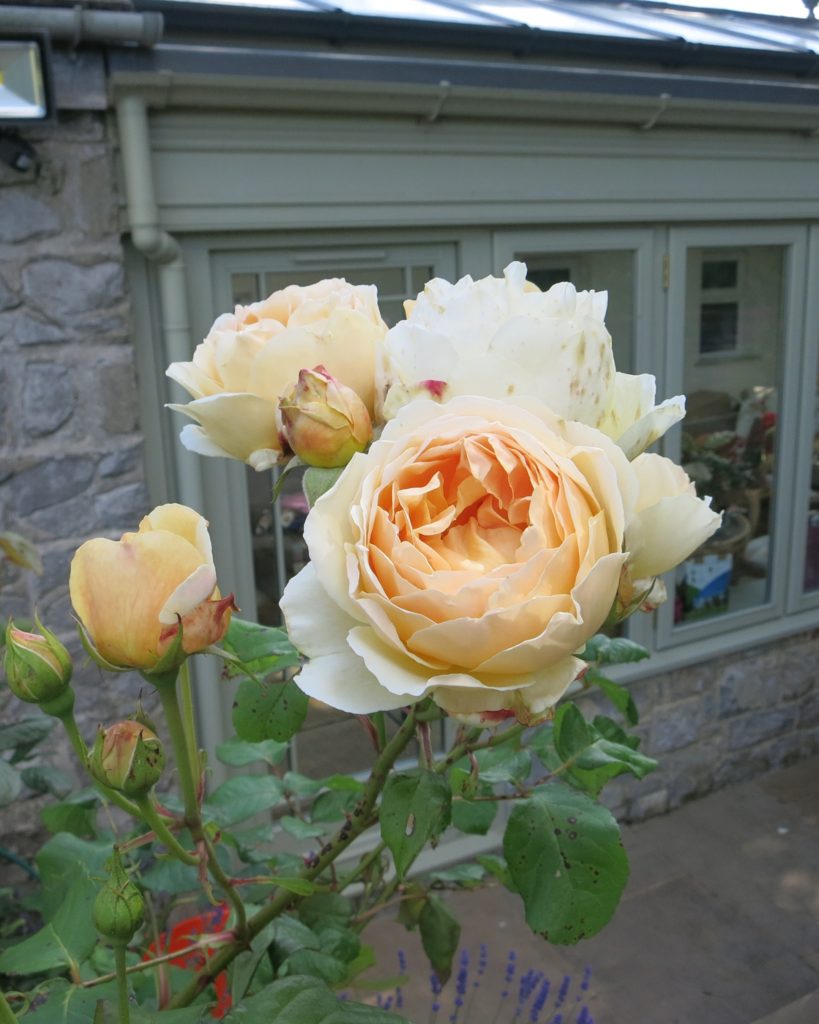
One of my favourites. Such a strong, upright and beautiful rose and with a splendid perfume
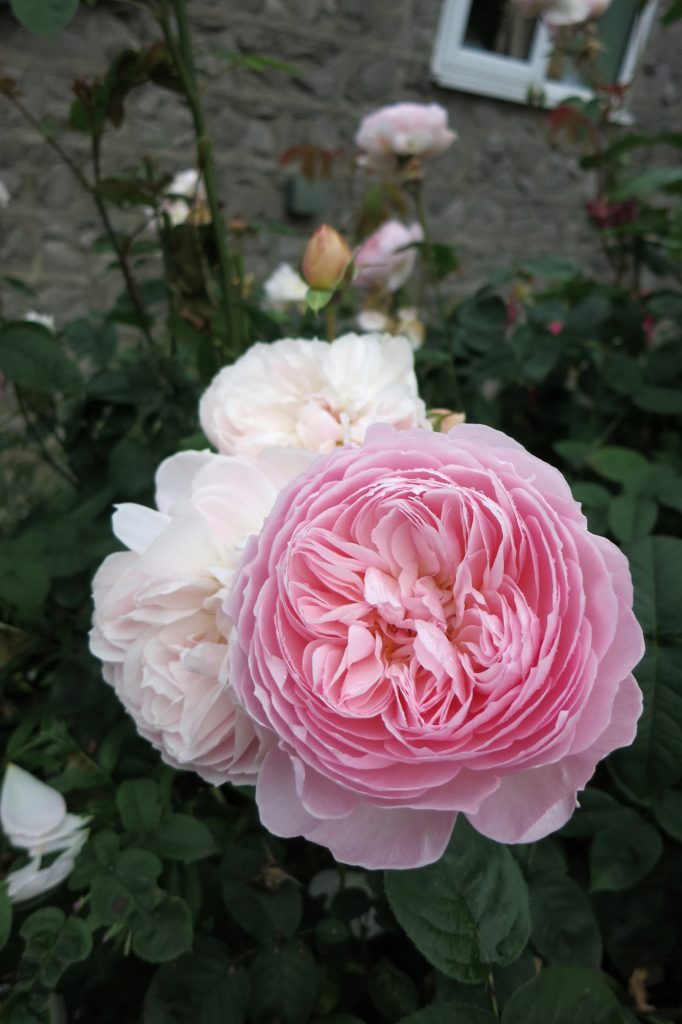
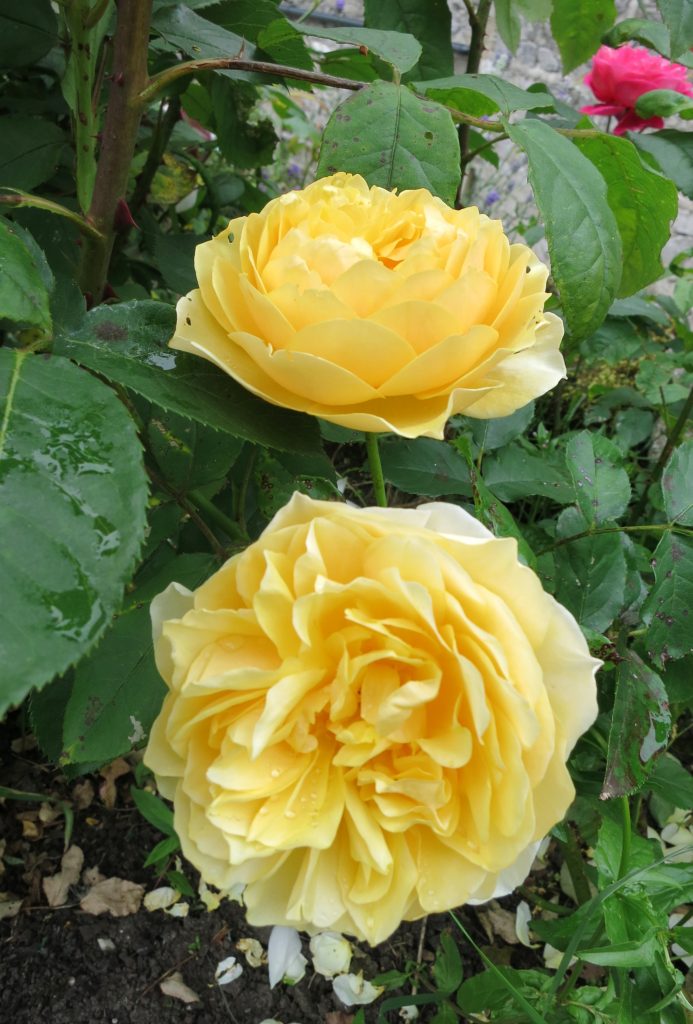
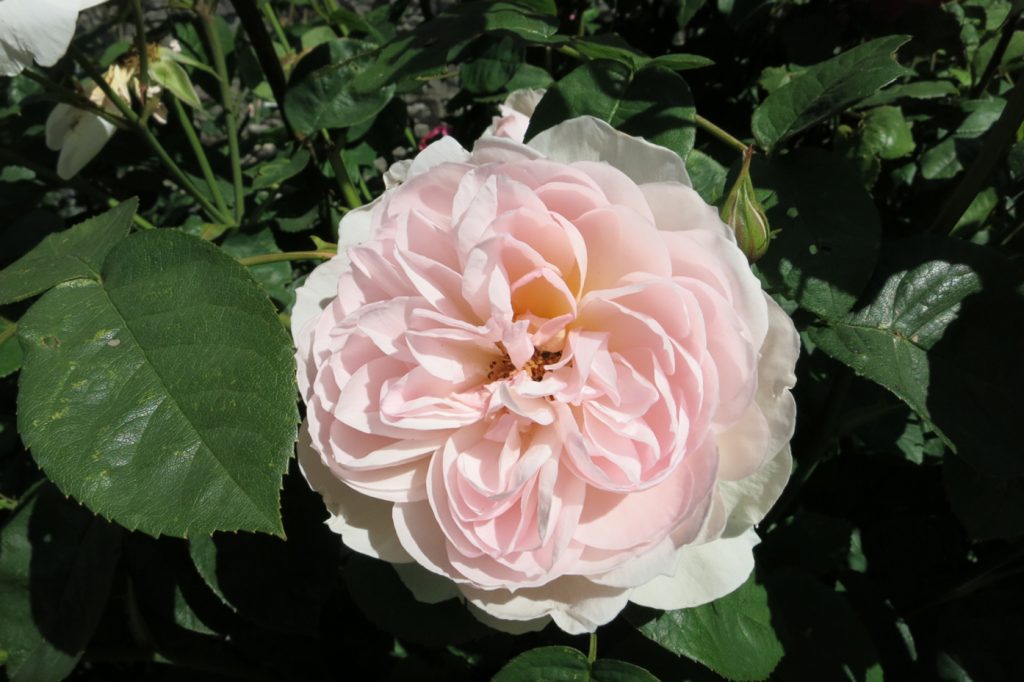
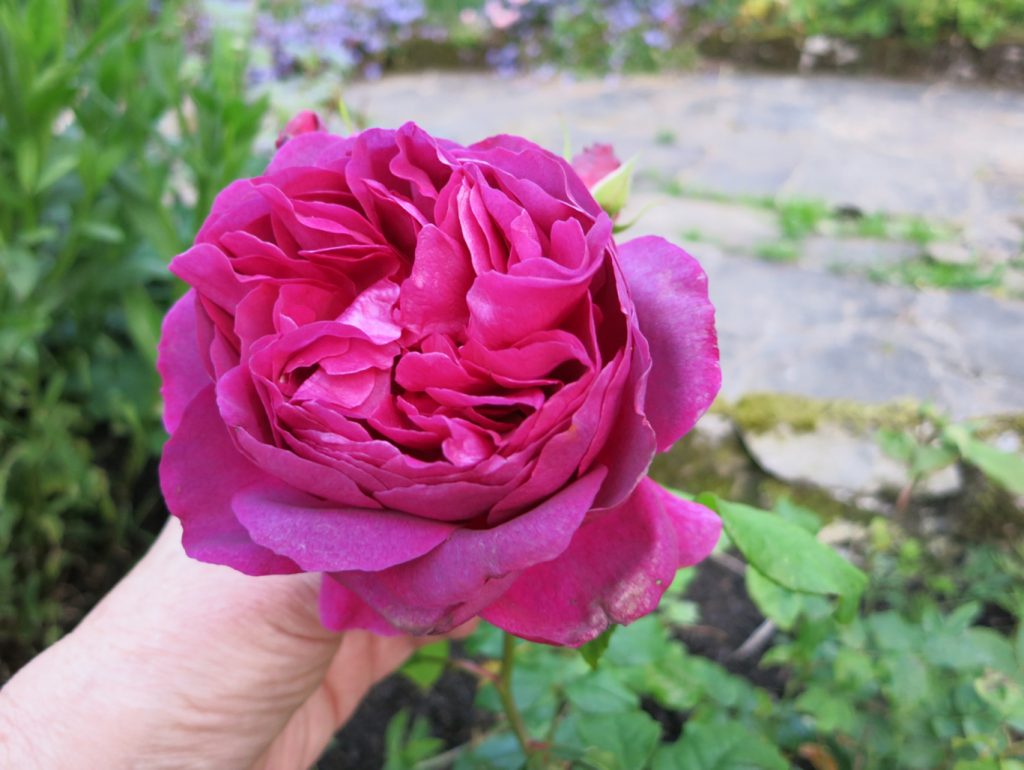
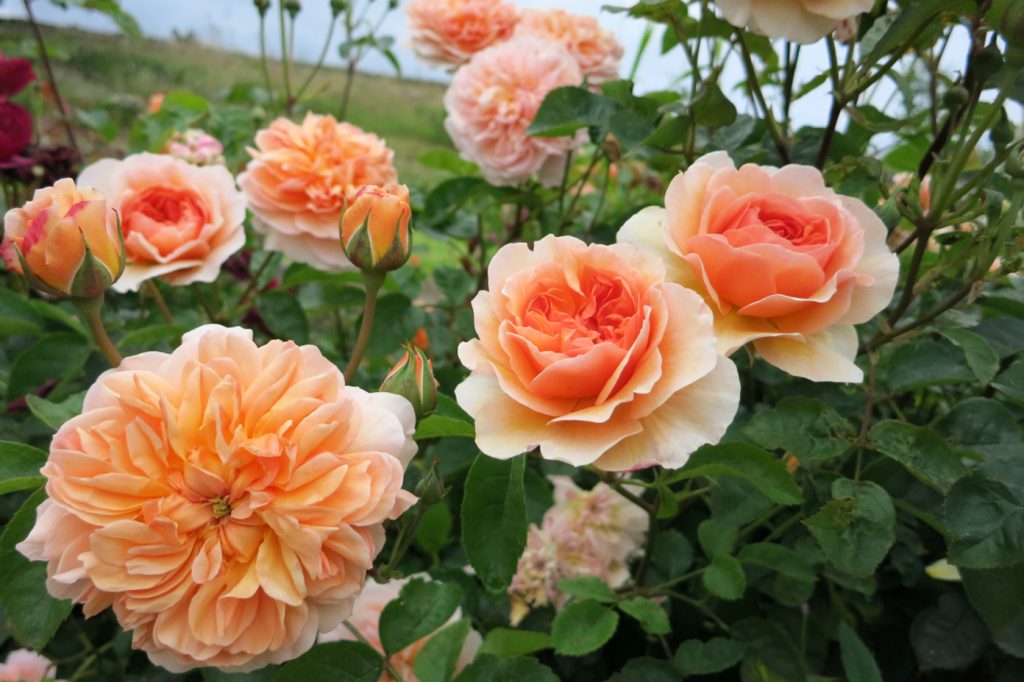
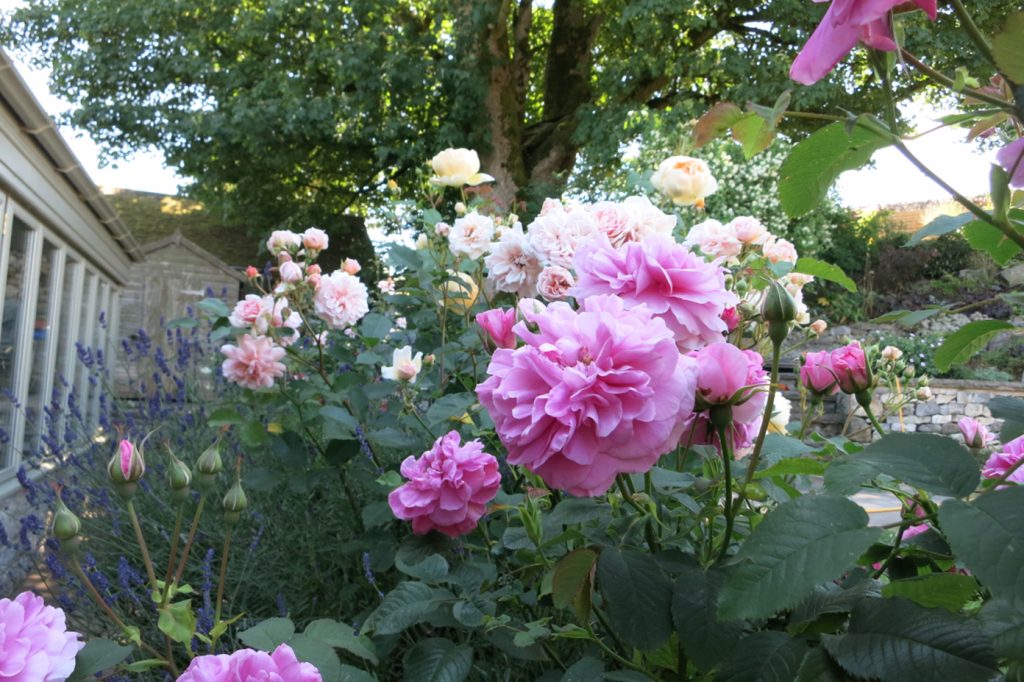
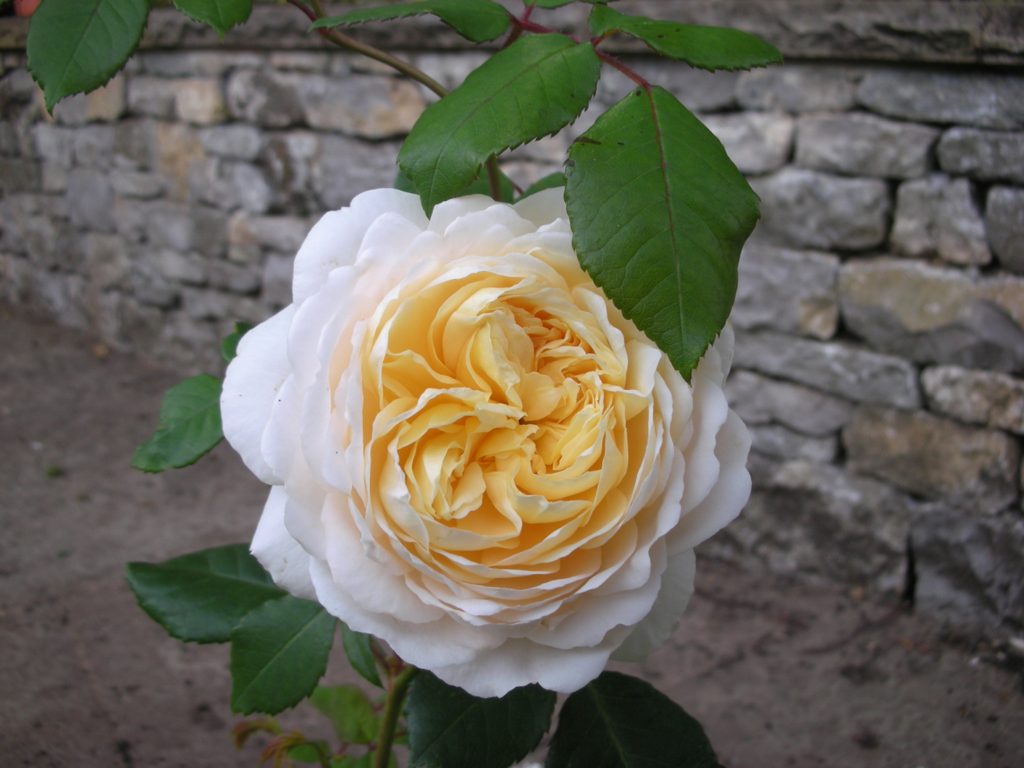
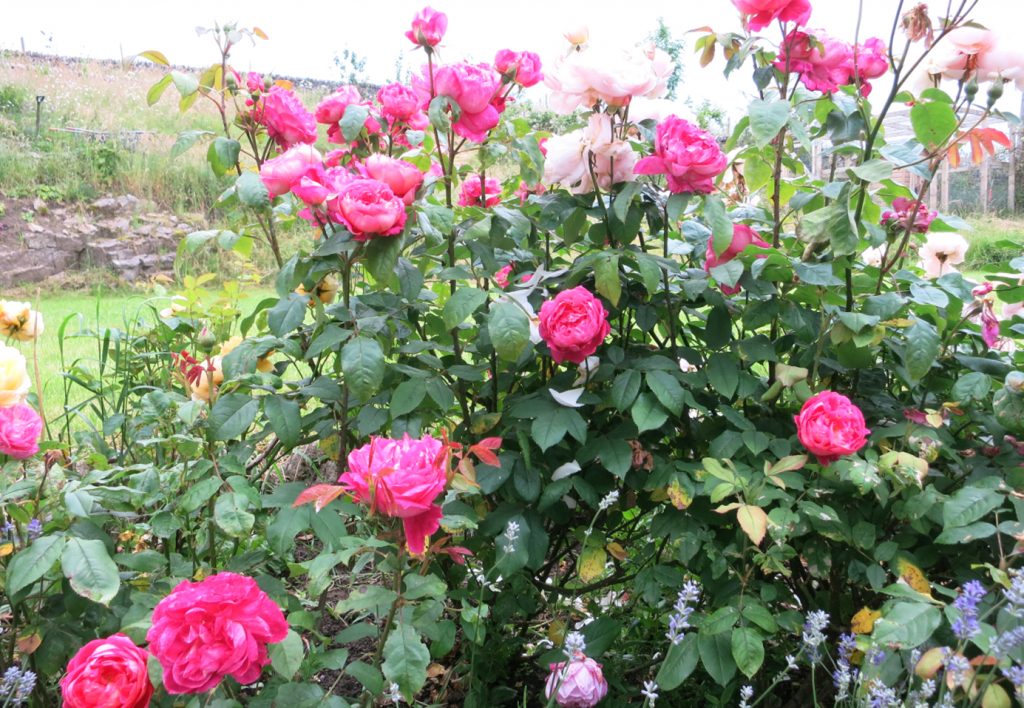
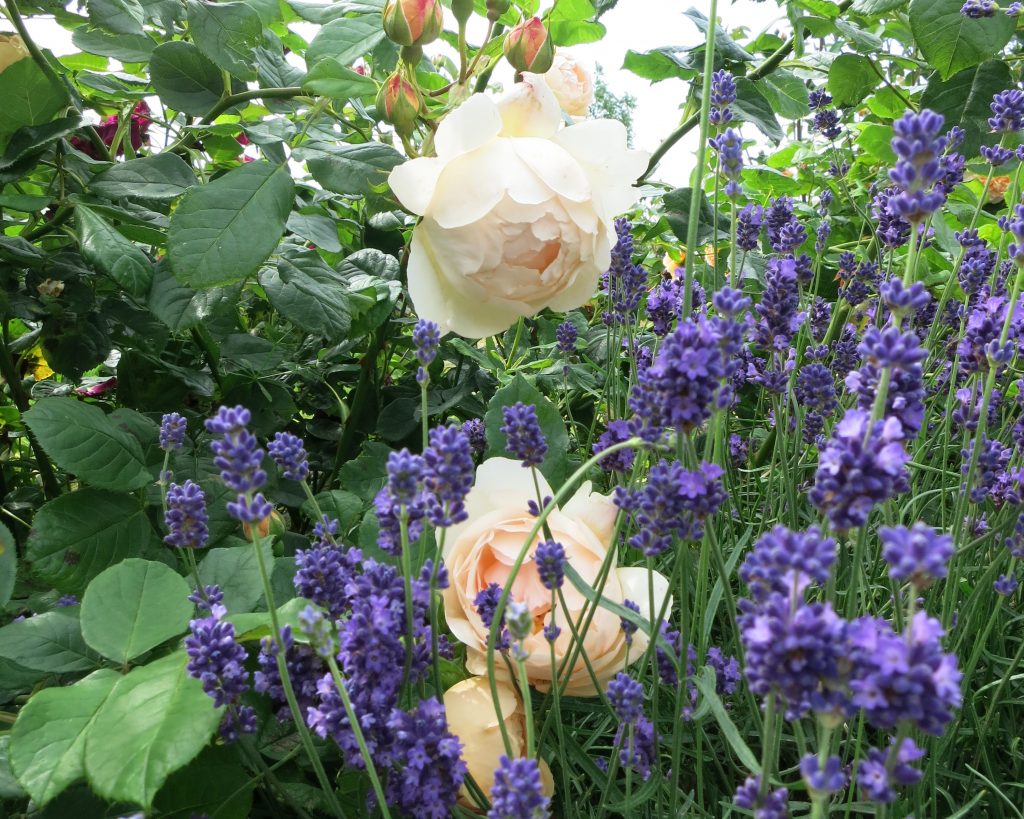
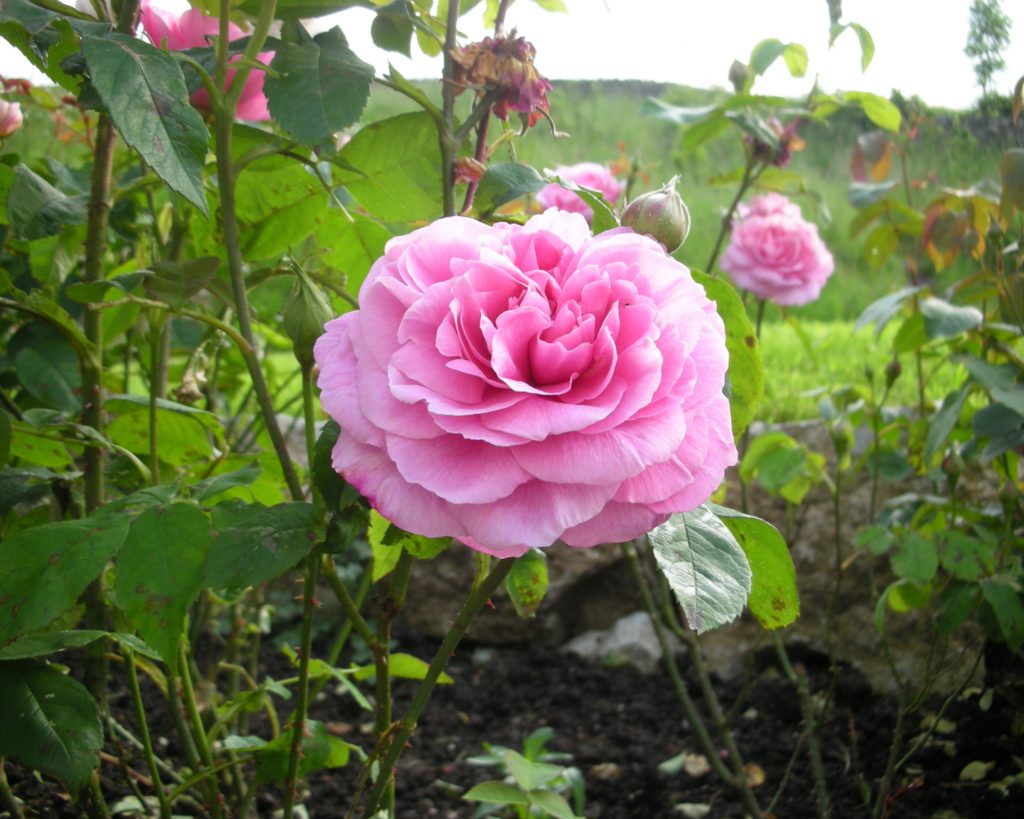
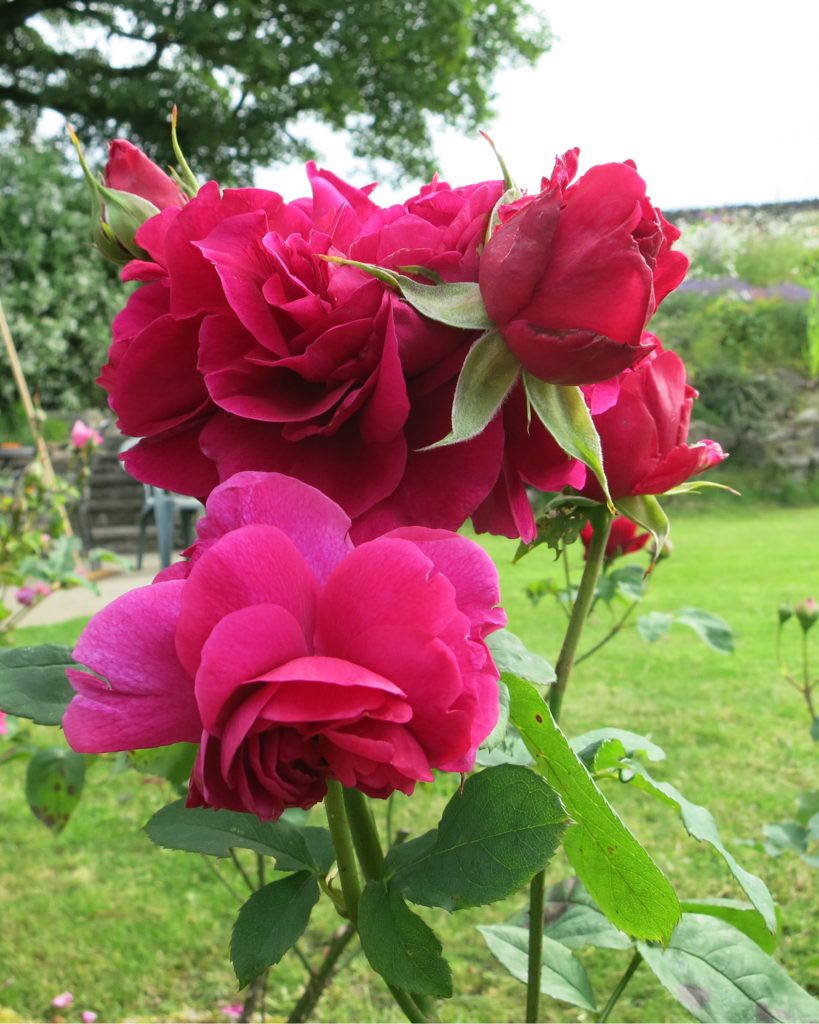
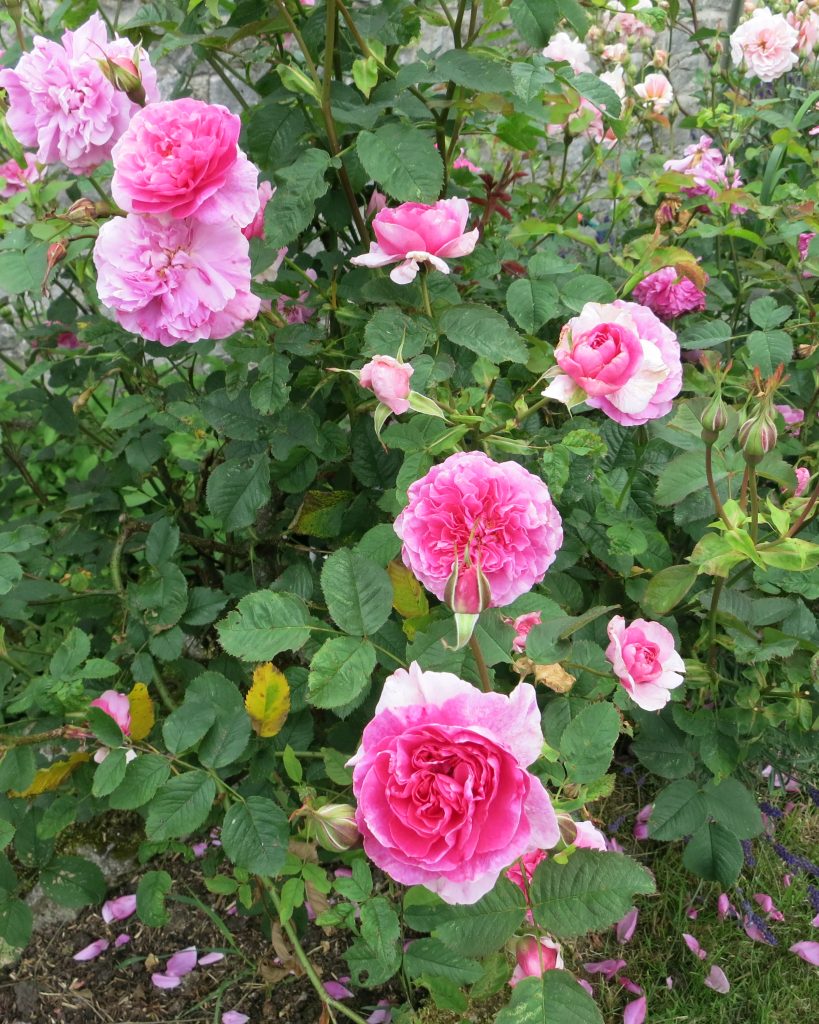
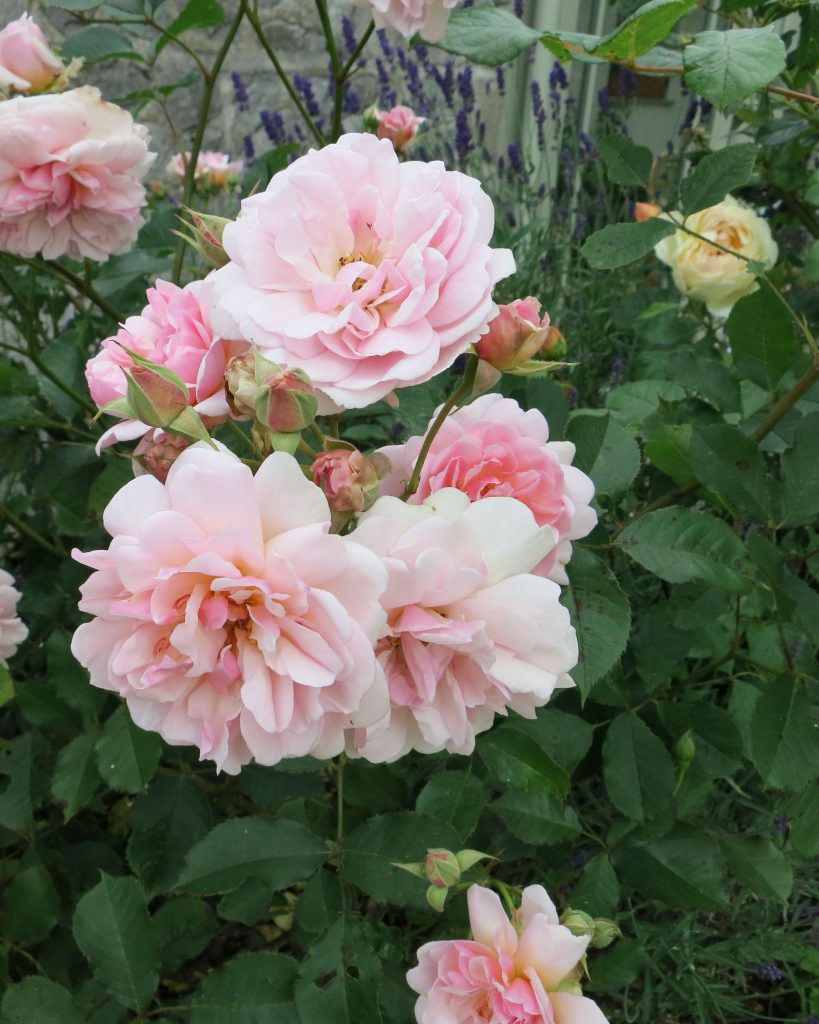
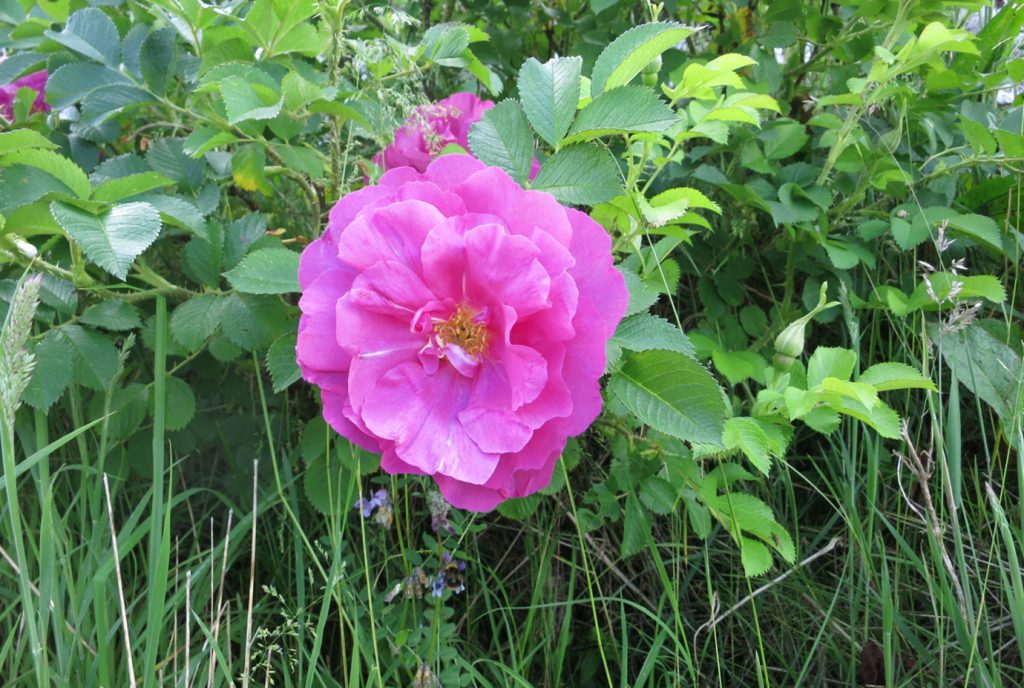
Planted in the wildflower border up against the top wall, the highest point in the garden.
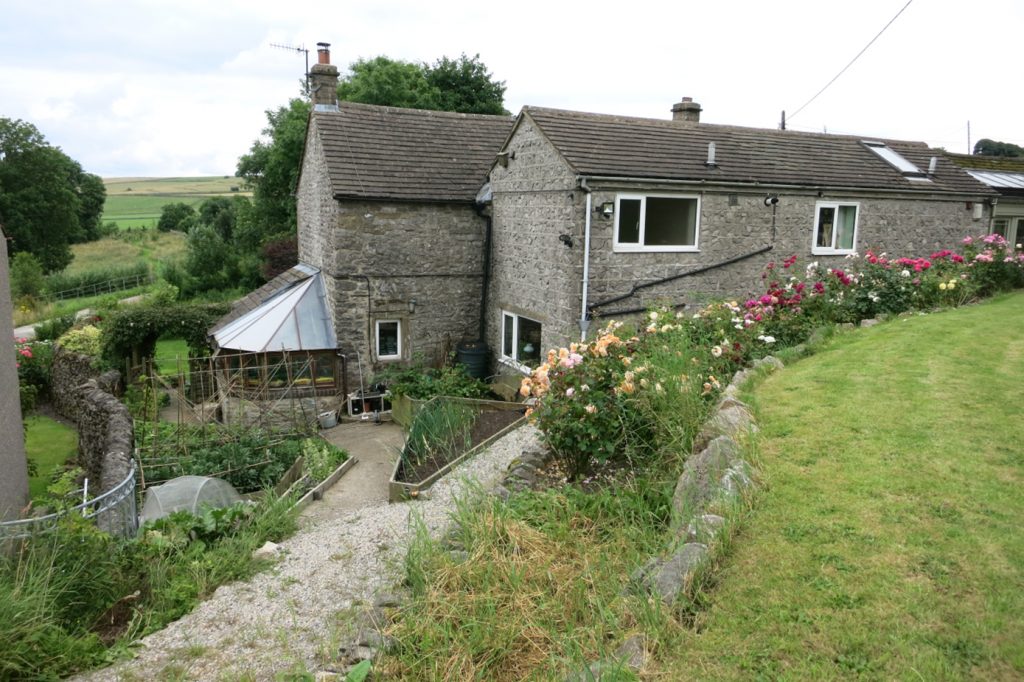
The far end of the rose bed remained unresolved for a couple of years: the mound of huge rocks stacked to retain the bank prevented easy access from the level of the lower path to the lawn and it was only once we managed to buy the adjoining field that we were able to get the diggers back in to move some of the rocks and create an access route.
I was aware, from previous digging, that a sizable vein of thick clay ran diagonally across the garden and this end of the rose bed was directly in its path. Digging out the deeply rooted Dandelions and Couch Grass was not going to be easy but it had to be done if I was ever going to complete my rose bed.
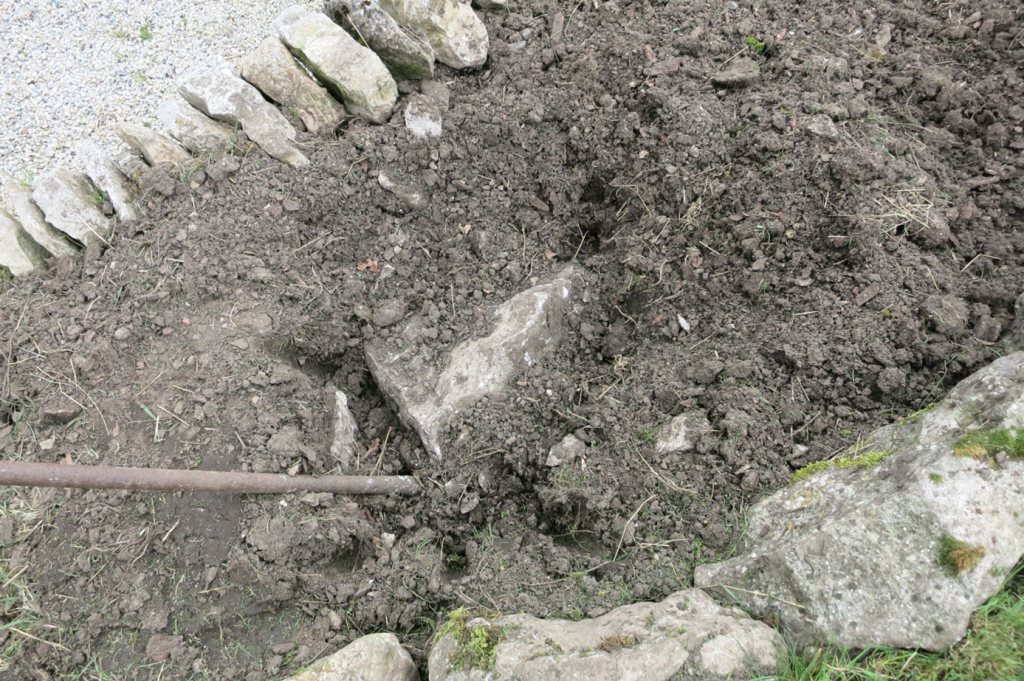
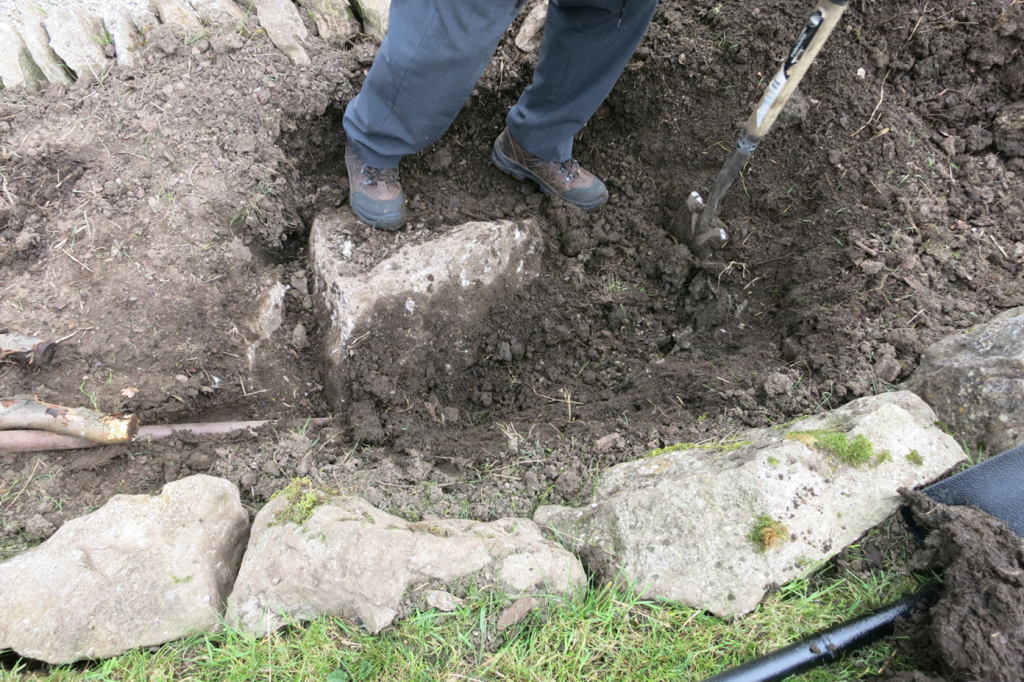
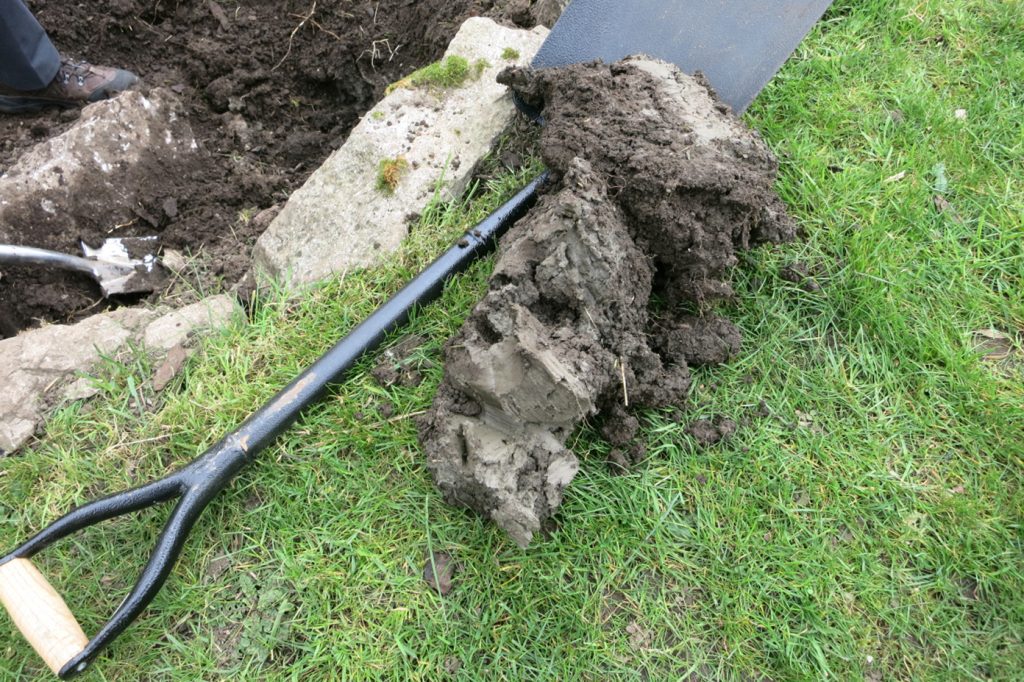
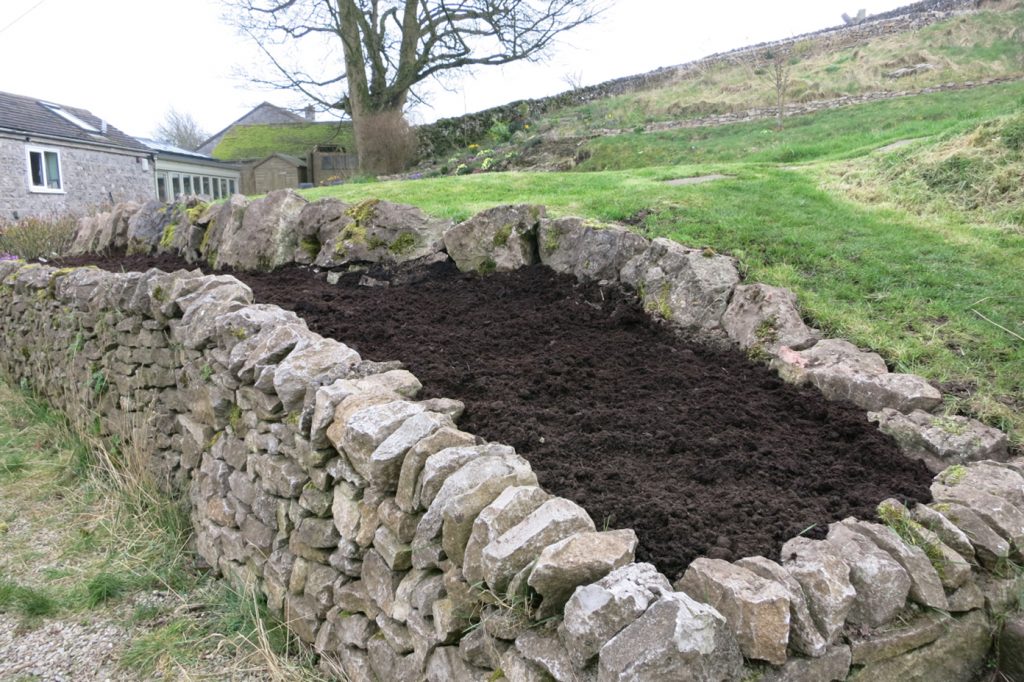
Already on order: Young Lycidas, Charlotte, Olivia Rose Austin, Strawberry Hill, Sceptred Isle, Desdemona, and Rosa Gallica Officianalis-The Apothecary Rose.
